#Imanol Arias
Photo
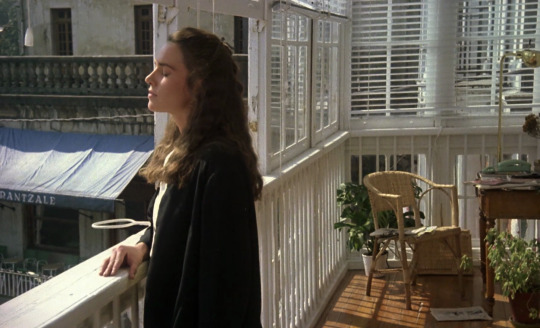



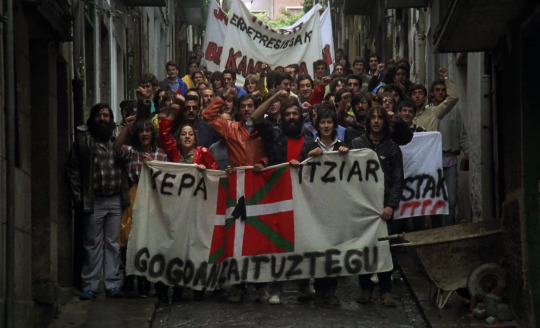



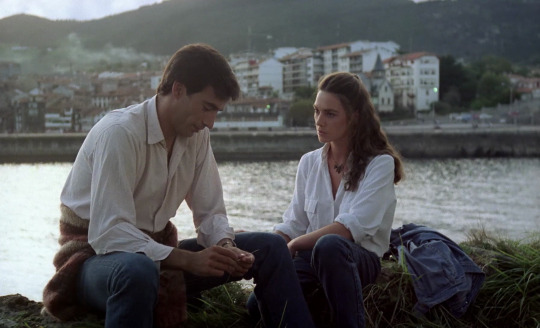
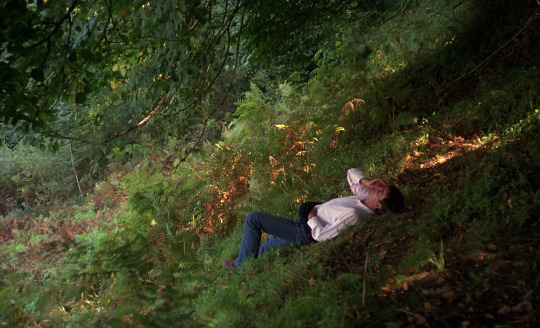
La muerte de Mikel (Imanol Uribe, 1984)
#films watched in 2023#La muerte de Mikel#Imanol Uribe#Imanol Arias#Amaia Lasa#Montserrat Salvador#siete#drama#Spain#family#lgtb#lgtbi#lgtbiq#homosexual#1984#Mikel’s Death#Fernando Telletxea#Ramón Barea#bed#love#País Vasco#terrorism#fashion#country#water#sea#propaganda#basque country
139 notes
·
View notes
Text
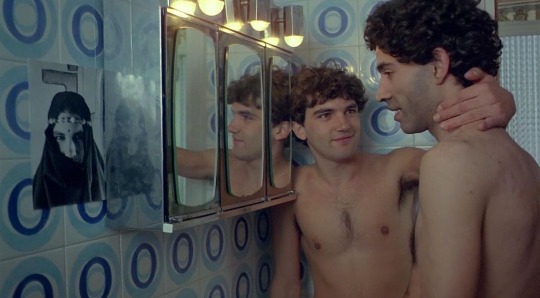
2 notes
·
View notes
Photo






Murieron por encima de sus posibilidades
Isaki Lacuesta. 2014
Room
Gran Teatre del Liceu, La Rambla, 51-59, 08002 Barcelona
See in map
See in imdb
#isaki lacuesta#murieron por encima de sus posibilidades#albert pla#jordi vilches#carmen machi#imanol arias#iván telefunken#luis tosar#raúl arévalo#barcelona#el liceu#gran teatre del liceu#shark#catalonia#rambla#spain#mirror#movie#cinema#film#location#google maps#street view#2014
10 notes
·
View notes
Photo

We have enough reality in our homes. Reality is for newspapers and TV. Look at the result. With so much reality, the country's ready to explode. Reality should be banned.
The Flower of My Secret (La flor de mi secreto), Pedro Almodóvar (1995)
#Pedro Almodóvar#Marisa Paredes#Juan Echanove#Carme Elias#Rossy de Palma#Chus Lampreave#Kiti Mánver#Joaquín Cortés#Manuela Vargas#Imanol Arias#Gloria Muñoz#Cecilia Roth#Affonso Beato#Alfredo Mayo#Alberto Iglesias#José Salcedo#1995
14 notes
·
View notes
Text
@asongofstarkandtargaryen I found another interesting film to watch. I'm used to do an upcoming films/series section, but this time it will be a little different.
In this case, this is a film from 2019, it's a period drama directed by Souheil Ben-Barka, and it's a co-production between Morocco and Italy, De sable et de feu (Sabbie e fuoco in Italian, Sand and Fire in English, and in Spanish the film is either called El sueño del califa or El sueño envenenado).
It's difficult to found the film, it isn't available in any streaming platform and I have been looking for it online and I haven't found it yet.
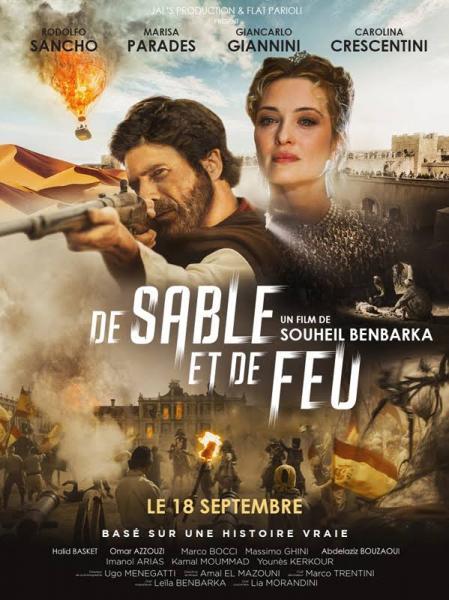
youtube
(This is the English version of the trailer, for the French and the Spanish ones, click in here and here)
The film Sand & Fire (The impossible Dream) tells the story of Domingo Badía i Leblich, alias Ali Bey al Abbassi (April 1st 1767, Barcelona -August 30th 1818, Damascus) and Lady Hester Stanhope, otherwise known as Meleki, Queen of Palmyra, (May 12th 1776 Kent, England - 1839 Djîhoun). Set between 1802 and 1818, the plot of the film has resonance for today with searing realism as it depicts a moderate peaceful Islam confronting another which is fanatical and cruel.
Domingo Badia was a Catalan scientist militar, traveler and Arabist, who in 1803, was commissioned by Manuel Godoy (prime minister of Charles IV of Spain) to undertook a long journey through Muslim territories, camouflaging him as a Syrian prince descendant of the Abbasids, Ali Bey al Abbassi, son of the Emir of Damascus (assassinated by the Otomans).
On the previous tears in Córdoba around 1795 he had been working on his project of the construction of a hot air balloon that he planned to use to carry out atmospheric observations (height of the atmosphere in relation to sea level, atmospheric pressure, heat and humidity), although after several attempts the project did not end with good results.
His travels took him to Morocco, Algeria, Libya and various regions of the Ottoman Empire (Egypt, Arabia, Syria, Turkey and Greece), which he would describe in the book The Travels of Ali Bey, in which along with detailed descriptions of the cities he visited, recorded his observations on geography, botany, zoology, entomology, geology and meteorology.
Although in fact, he was a secret agent with a mission to gain the trust of the Moroccan Sultan, Moulay Slimane and trying to convince him to accept a proposal to stablish the sultanate as a protectorate under the Spanish rule. By then, Badía was conspiring against the sultan, conducting extensive negotiations with the chiefs of the rebellious tribes, to destabilize the sultanate's government and overthrow the sultan, who was suspect of broking his neutralilty and ally with the English against Spain in the context of the Anglo-Spanish War (1804-1809), but the plan failed and Moulay Slimane expelled Ali Bey from the country.
Apart from his travels and his missions in Morocco, during the Napoleonic invasion he acted as mayor of Segovia and prefect of Córdoba between 1809 and 1811 under the rule of Joseph I of Spain.
Within this time period, Richard Brothers (well known for his extremely detailed prediction of the beheading of Louis XVI of France) revealed in a book that Lady Hester Stanhope, niece of the English Prime Minister, William Pitt, would be crowned Queen of Palmyra, the new Zenobia.
Lady Hester was a British aristocrat, but also an adventurer, antiquarian, and one of the most famous travellers of her age. Her archaeological excavation of Ashkelon in 1815 is considered the first to use modern archaeological principles, Her letters and memoirs made her famous as an explorer. She traveled to several places of the Ottoman Empire like Athens, Rhodes, Constantinople, the Ionian Islands, the Peloponnese, Athens, Malta, Constantinople, Rhodes, Egypt, Palestine, Lebanon and Damascus and Jerusalem.
On April 14, 1813, Lady Hester made the decision to charter a caravan of 50 camels, a large retinue of servants and dressed in splendid clothes in the manner of a Druze prince, also hiring a group of armed and uniformed Bedouins as Praetorian Guard. Lady Hester pretended to imitate the mythical queen Zenobia who defied the Romans. On March 29, 1813, the procession arrived at the city of Palmyra, which was splendidly received by the Bedouins. Lady Hester Stanhope earned the admiration and respect of the local Bedouin tribes, who called her Maliki or the White Queen of Tadmir (Palmyra).
Domingo Badia meets Lady Hester when he goes to London on a mission. It is the starting point of a passionate tumultuous love affair which endures for fourteen years before its tragic end; their love unable to sustain two irreconcilable visions of Islam.
Badía died in Damascus in 1818, it is said that he was poisoned by a British agent or that the British ordered to poison him, due to some of his actions during his secret misions were unfavorable for the British, it's said that probably Badía was in a secret mission by that time. Previously he had already frustrated some interventions by the English, such as in 1806 when Badía sabotaged the British plan to remove Mehemet Ali and install their puppet Elfi Bey as pasha of Egypt or when in 1807 in Syria he discovered and destroyed a secret line that the English had to communicate with India.
A film-goer, travelling with Ali Bey through Spain, France, England and Morocco, is transported to sumptuously decorated palaces in Madrid, Paris, London and Morocco of the early 19th century and with Lady Hester to the burning sands of Arabia and the ancient ruins of Palmyra.
The film was shot in Italy, Morocco and England, and it lasts 115 minutes.
After a long absence, Souhail Ben-Barka returned to filmmaking. His career is rich in many films that have marked the history of Moroccan cinema, including the film “Amok” which has won many awards, in addition to his masterpieces “The Battle of the Three Kings”, “The Curse of the Pharaoh” and “The Lovers of Mogador”.
Director's note
I have always had freedom of choice concerning the topics and characters of all my previous films. For this one, I feel designated - as if it has chosen me… With his accomplished seduction, no one can resist the charms of the trickster, The figure full of charisma and mischief, but also the taste for conquest and bluffing of Badia /Ali Bey: From the most humble subjects to the grandest dignitaries, from the Sultan Moulay Slimane, to Lady Hester, Queen of Palmyra, to Napoleon himself who enquires of Talleyrand:
"Your man - is he genius or a madma.?" To which Talleyrand answers.
"A subtle combination of both, Sire. Great men are made that way."
Cast
Rodolfo Sancho (Domingo Badía i Leblich, aka Ali Bay al Abbassi)
Carolina Crescentini (Lady Hester Stanhope, aka Meleki)
Marisa Paredes (Lady Williams)
Giancarlo Giannini (Talleyrand)
Imanol Arias (Sultan Moulay Slimane/ Sulayman of Morocco)
Omar Azzuzi
Massimo Ghini (Amoros)
Marco Bocci (Manuel Godoy)
Abdelaziz Bouzaoui
Younés Kerkour
Hamid Basket
Kamal Moummad (Salem)
Ulisse Provolo (Dott. Blizzard)
Christo Jivkov (Mulai Driss)
Jean-Pierre André Douay
Emanuele Vezzoli (Firmin Didot)
Enrico Salimberi (Napoleon Bonaparte)
Creative staff
Director: Souheil Ben-Barka
Story and Screenplay : Bernard Stora and Souheil Benbarka
Executive Producers: Gianni Sarago and Hamid Basket
Art Director: Amal El Mazouni
Production Designer: Marco Trentini, Francesco Cotone
Director of Photography: Ugo Menegatti
Chief Make Up Artist: Leila Benbarka
Costume Supervisor: Lia Morandini
Music by: Stefano Lentini
Production: Co-production Morocco-Italy: Jal's Production (Casablanca) and Flat Parioli SRL (Rome).
Official website: http://www.desableetdefeu.fr/
Facebook
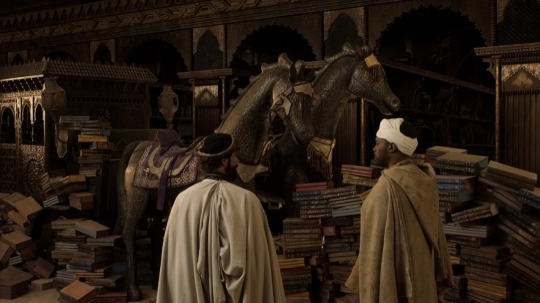

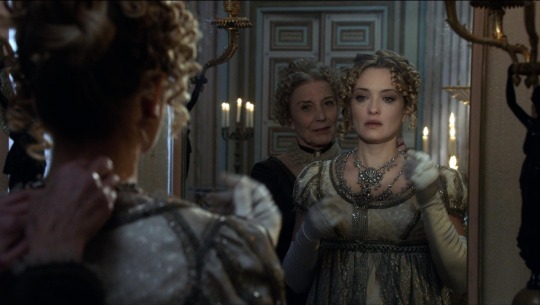






(I have found more pics about the film, but for thid post these are enough)
#de sable et de feu#sabbie e fuoco#sand and fire#el sueño del califa#el sueño envenenado#souheil benbarka#films#period dramas#rodolfo sancho#giancarlo giannini#carolina crescentini#marisa paredes#imanol arias#halid basket#omar azzouzi#marco bocci#massimo ghini#abdelaziz bouzaoui#kamal moummad#younés kerkour#christo jivkov#ulisse provolo#jean-pierre andré douay#domingo badía i leblich#ali bey al abbassi#hester stanhope#meleki of palmyra#slimane of morocco#sulayman of morocco#manuel godoy
9 notes
·
View notes
Text

Imanol Arias-Ornella Muti "El amante bilingüe" 1993, de Vicente Aranda.
9 notes
·
View notes
Text
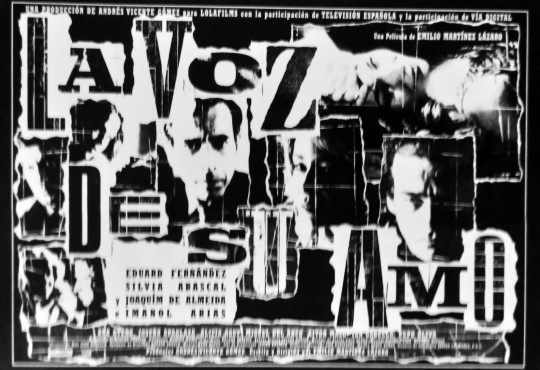
#movies#La voz de su amo#Emilio Martínez-Lázaro#Eduard Fernández#Silvia Abascal#Joaquim de Almeida#Imanol Arias#2001
5 notes
·
View notes
Text
Thinking Aloud About Film: Pedro Almodóvar 2: Labyrinth of Passion
Thinking Aloud About Film: Pedro Almodóvar 2: Labyrinth of Passion
We discuss Almodóvar’s second feature, Labyrinth of Passion, where Almodóvar himself appears both as director and rock star in minor roles. We talk about its convoluted plot, its verbal and visual campyness, its anti-authoritarian stance and its status as a youth film. We note how even in his second film, there are evident connections with his first film (not least in the recurring cast) and plot…

View On WordPress
#Antonio Banderas#Cecilia Roth#Helga Line#Imanol Arias#La nueva movida madrileña#Laberinto de Pasiones#Labyrinth of Passions#Pedro Almodóvar#Thinking Aloud About Film
1 note
·
View note
Text
Ayer jueves, Pablo Motos presentó en El Hormiguero a Putrancas, una nueva hormiga mujer con la que acallar las acusaciones de machismo. Putrancas tiene una forma similar a las otras hormigas, pero con la particularidad de tener unos pechos enormes, los labios muy gruesos y pintados de rojo y estar siempre mascando chicle. “Decían que en este programa no hay paridad, ¡pues que salga Putrancas!”, gritó ayer Motos en horario de máxima audiencia.
El público de El Hormiguero se volvió loco y aplaudió a rabiar en cuanto vio a esta nueva hormiga. Enseguida sus chistes sobre ser muy promiscua, mantener relaciones sexuales a cambio de dinero y sentirse muy atraída por todos los hombres provocaron las carcajadas de los presentes. “Tú, Pablo, seguro que tienes pollón, porque cuanto más bajito más grande es el pito…”, espetó Putrancas a la primera de cambio metiéndose a la audiencia en el bolsillo.
Además del humor irreverente previamente mencionado, la nueva hormiga también hace comentarios «guarros» a los hombres invitados para demostrar que El Hormiguero es un programa igualitario. “Oye, Imanol Arias, ¿tú duermes con ropa interior sexy, cómoda o me comes todo el coño?”, pregunto al invitado, provocando una sonora carcajada entre el público. “Dios, te arrancaba la polla a pedazos”, continuó, demostrando que El Hormiguero se ha revisado.
Tras el éxito de la incorporación de Putrancas, ahora El Hormiguero ya piensa en nuevas maneras de seguir contentando al público feminista. “En lugar de aburridos experimentos de ciencias que las mujeres no entienden, vamos a empezar una sección de peluquería y de pintarse las uñas que hará las delicias de nuestro público femenino, especialmente de las niñas”, ha adelantado Pablo Motos.
6 notes
·
View notes
Text
'One of the virtues of the best actors is versatility. It is the ability to go from one character to another without leaving traces of the previous one , so that the viewer can discover in each composition someone different, beyond the matrix. Perhaps that is why it must have been difficult for more than one person to find in the dark Tom Ripley the sexy priest from Fleabag who broke the mold of television priests . There is enormous transformation work in Andrew Scott .
The 47-year-old Irish actor, who since before he was 20 has lent his face and body to many fictional creatures, has had an interesting peak of popularity when he played the priest who fell in love with Fleabag , the protagonist of the eponymous series, created and starring Phoebe Waller-Bridge .
The dramatic comedy released in 2016, owner of acid humor and a few television awards, had a very juicy character in its second season (in 2019): the priest who married Fleabag's father and who came to doubt his own vocation after having crossed paths with hers .
The scenes shared in that batch of six episodes managed to bring out sparks, to create an unmistakable chemistry between the two, to the delight of the viewers.
The screen - small or large - in the world had many priests who conquered the heroine, such as Camila's Ladislao by Imanol Arias or Father Coraje by Facundo Arana . But Fleabag 's had extra seasonings that made it different, both inside and outside the church.
He was funny, daring, capable of using bad words no matter what . It was a good listen for the confessions of the commanded woman with a past that tortured her and a present that altered her. He came to consider whether to continue wearing her cassock or stay trapped in the fiery passion that she ignited in him , whether they saw each other or not. He knew how to think about it.
“The priest” , as he was quoted in the script, hesitated to give way to his emotions above his religious vocation. And she, who already demonstrated from chapter one that she was capable of breaking down the fourth wall to speak to the public, was moving forward: she knew how to seduce, despite her low self-esteem .
From the colorful priest to the black and white murderer
But nothing remained of that man who remained in the memory of the fans of that irreverent and groundbreaking comedy (except, of course, the complete episodes on various platforms and certain viral cuts on the networks). And now, five years later, Scott shines from the darkness of Tom Ripley, the central character of Ripley, the black and white Netflix miniseries that became a streaming rage .
Born in Dublin on October 21, 1976, Scott received the Laurence Olivier Award in 2005 among other statuettes that highlight his talent. The priest from Fleabag won him a Television Critics Award (and a Golden Globe nomination), and Professor Jim Moriarty, archvillain from Sherlock , earned him the BAFTA TV for best supporting actor of 2012.
He will surely receive statuettes for his work in We Are All Strangers , a 2023 film that Star+ premieres this Wednesday, in which he shares the bill with Paul Mescal , the male protagonist of the great series Normal People.
Although he was born and raised in Ireland, he decided to train artistically in London. She worked with greats like Anthony Hopkins, Claire Foy (the young queen of The Crown) and Emma Thompson .
And he could already be considered a great one, especially after the enormous work of composing Ripley's killer , in a new audiovisual adaptation of the novels by Patricia Highsmith .
Scott devours each of the eight episodes of the season, with remarkable handling of silences and tension, in a production that makes narrative slowness an achievement. It's a different series . How different his character is from those of his large gallery of creatures in whom he always finds his soul. And the nuances .'
#Andrew Scott#All of Us Strangers#Paul Mescal#Normal People#Anthony Hopkins#Emma Thompson#Claire Foy#Phoebe Waller-Bridge#Fleabag#Hot Priest#Ripley#Netflix#Patricia Highsmith#Olivier Awards#BAFTA#Moriarty#Sherlock
0 notes
Text
§ 3.357. Tiempo de silencio (Vicente Aranda, 1986)
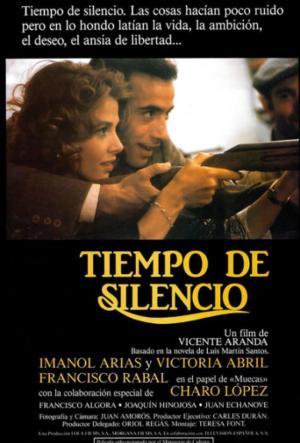
La novela de Luis Martín Santos me gustó, pero mucho más la biografía que leí hace años de él, de su obra y de vida por un periodista canario que... ahora mismo no recuerdo de cómo se llama. La novela la recuerdo difícil, con una trama sencilla pero contanda -creo recordar- desde diferentes perspectivas. Una novela de las que considero difíciles.
El relato y la crítica social es más que evidente. Una España absolutamente empobrecida, con una economía de subsistencia, y una incultura gobernando las relaciones humanas, sociales, laborales.
La película es estupenda. Bien rodada, con su 'tempo' propio, bien narrada la historia, con un guión fascinante, actuaciones mesuradas pero en su punto. El reparto de la película es un absoluto escándalo: Imanol Arias, Victoria Abril, Charo López, Francisco Rabal y Juan Echanove, entre otros.
Me gusta Aranda. gran director, capaz de evolucionar, desde un Fantaterror patrio hacia obra mucho más conceptuales y profundas. Toda una carrera de esas que marcan a toda una generación de cineastas, críticos y público. Verdaderamente un grande.
0 notes
Video
youtube
Mónica Oltra, Alfonso Rojo, Broncano, Rubiales e Imanol Arias #ResumenSe...
0 notes
Photo

I went to an orgy after the concert, but I could only think of you.
Labyrinth of Passion (Laberinto de pasiones), Pedro Almodóvar (1982)
#Pedro Almodóvar#Cecilia Roth#Imanol Arias#Helga Liné#Marta Fernández Muro#Fernando Vivanco#Ofelia Angélica#Ángel Alcázar#Concha Grégori#Cristina Sánchez Pascual#Fabio McNamara#Antonio Banderas#Luis Ciges#Agustín Almodóvar#Ángel Luis Fernández#Bernardo Bonezzi#Miguel Fernández#Pablo Pérez Mínguez#José Salcedo#1982
15 notes
·
View notes
Text





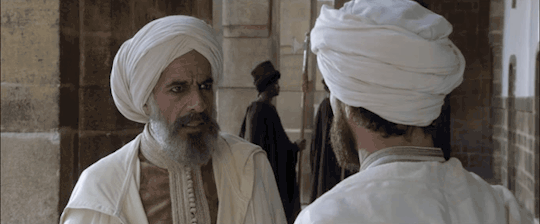
De Sable et de feu (2019)- dir. Souheil Benbarka
-> Some members of the cast
#de sable et de feu#sand and fire#sabbie e fuoco#el sueño del califa#el sueño envenenado#period dramas#films#souheil benbarka#rodolfo sancho#carolina crescentini#marisa paredes#giancarlo giannini#massimo ghini#imanol arias#sulayman of morocco#amoros#talleyrand#lady williams#hester stanhope#meleki of palmyra#domingo badía#ali bey
2 notes
·
View notes
Video
youtube
Mónica Oltra, Alfonso Rojo, Broncano, Rubiales e Imanol Arias #ResumenSe...
0 notes
Text
Imanol Arias negocia con la Fiscalía para llegar a un acuerdo y evitar los 27 años de prisión en la causa de fraude fiscal que se juzgará en junio - Infobae
El popular actor está intentando llegar a un acuerdo de conformidad con Anticorrupción tras pagar a Hacienda gran parte de lo reclamado. El juicio del ‘caso Nummaria’ empieza en junio
— Leer en www.infobae.com/espana/2024/02/29/imanol-arias-negocia-con-la-fiscalia-para-llegar-a-un-acuerdo-y-evitar-los-27-anos-de-prision-en-la-causa-de-fraude-fiscal-que-se-juzgara-en-junio/
View On WordPress
0 notes